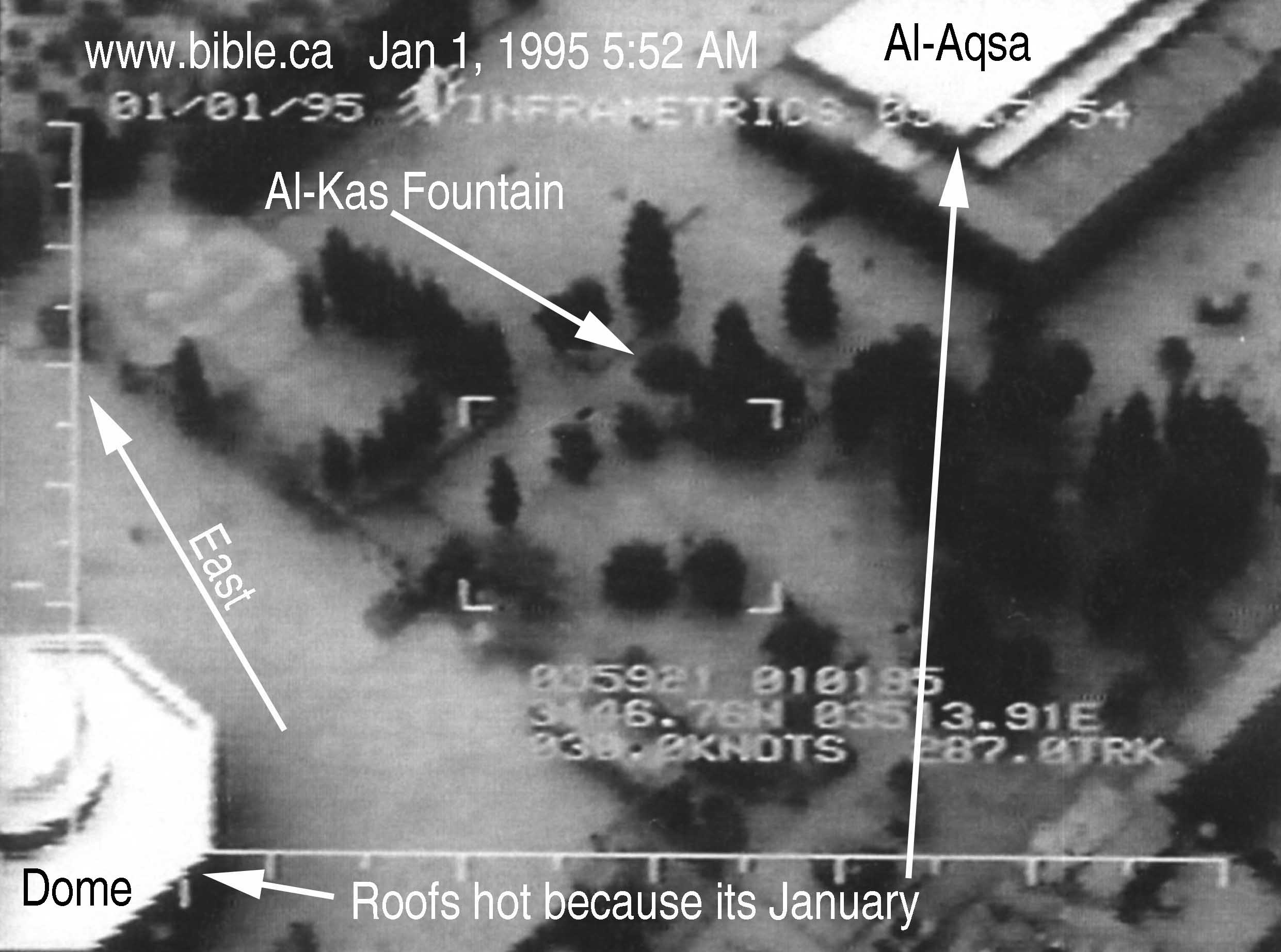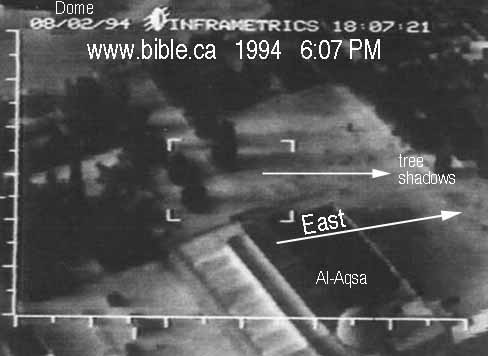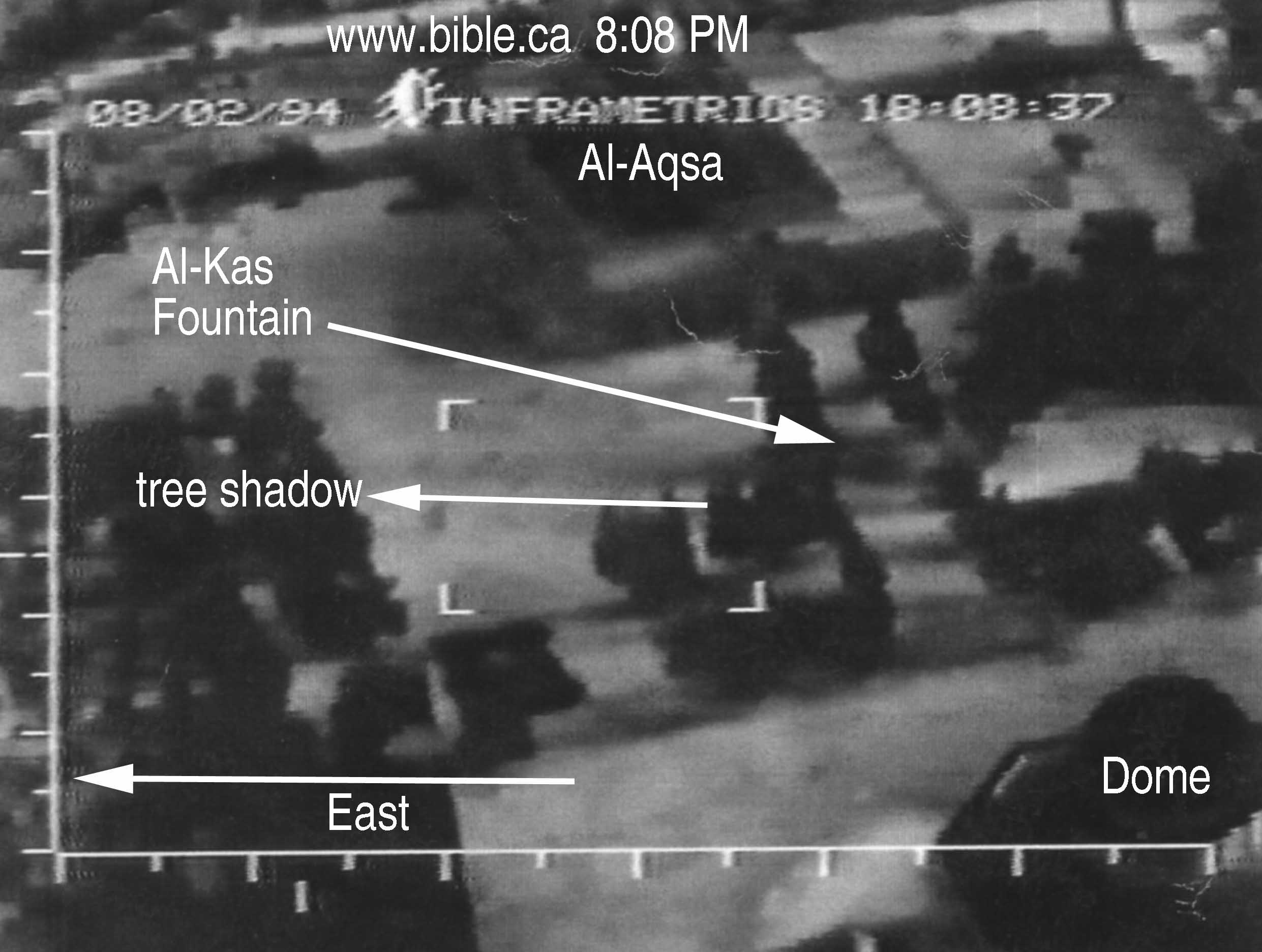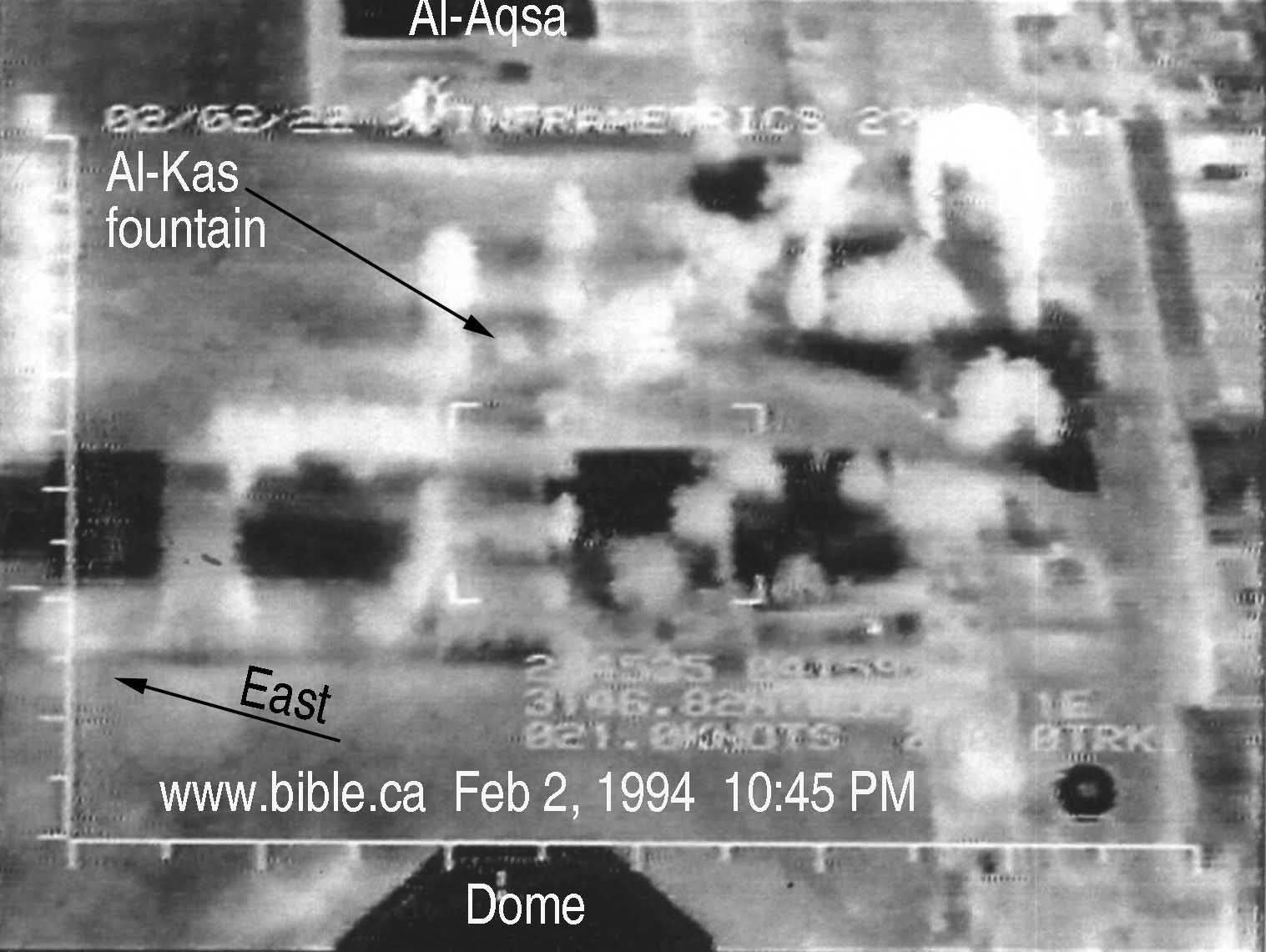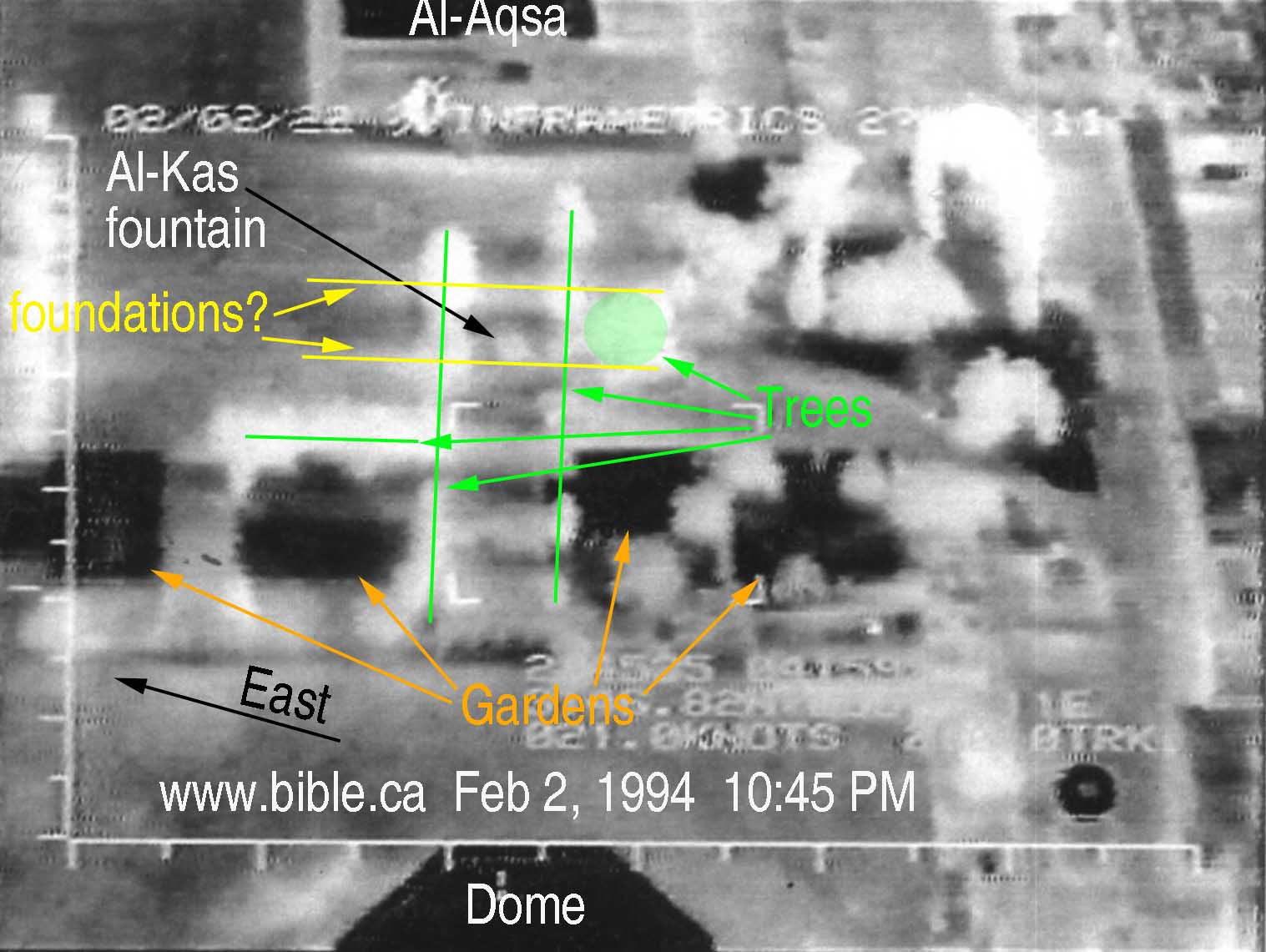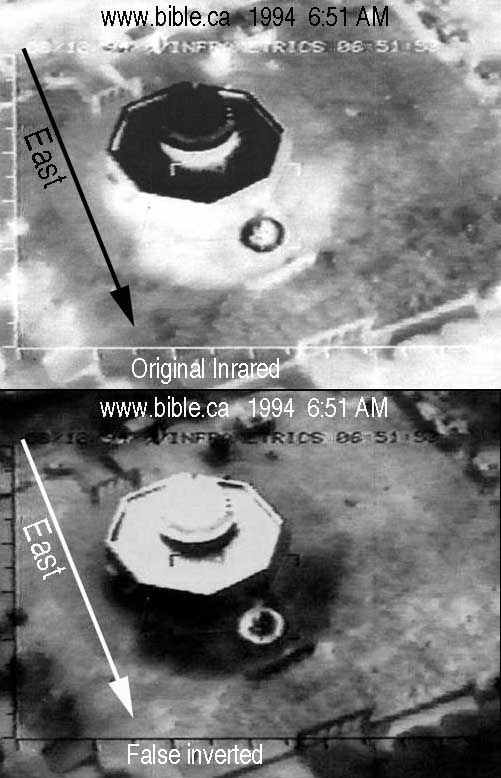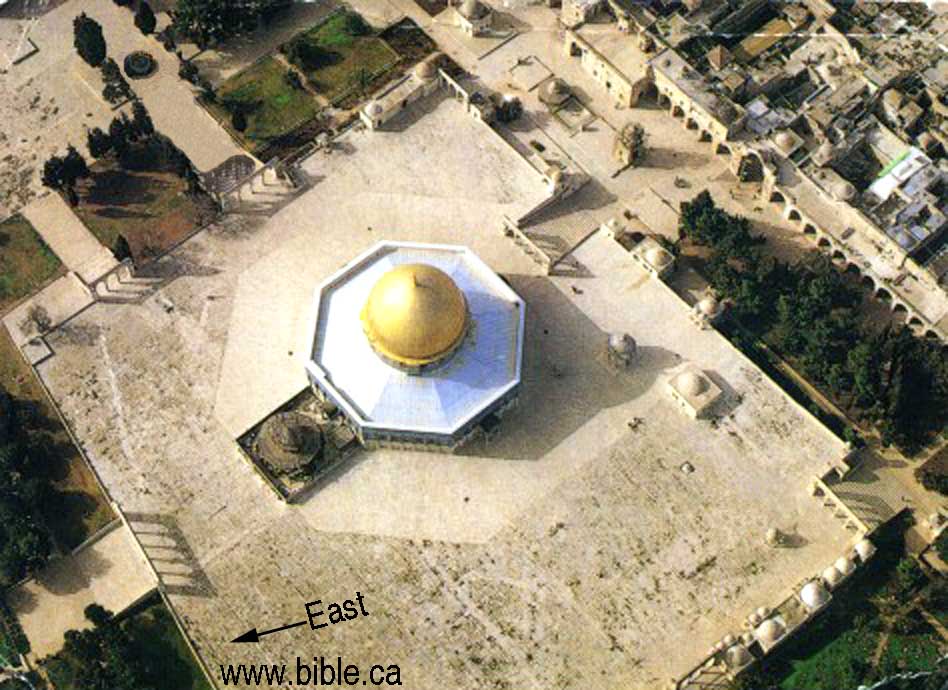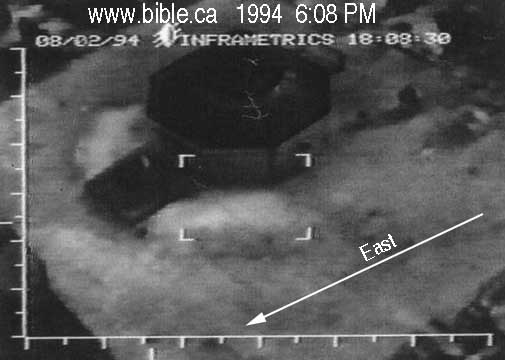Al-Kas Fountain
January 1, 1995, 5:52 AM
This picture was taken very early in the morning after a cold January night. You can see the roofs of the Dome and Al-Aqsa are hot because the buildings are heated and the heat would escape through the roof. The Al-Kas fountain area is uniform, providing no information.
Al-Kas Fountain
February 2, 1994, 6:07 PM
You can see the dark shadows from the trees. This is because as the sun sets, that part of the ground is shaded and therefore cooler. Little information about substructures is discernable.
Al-Kas Fountain
February 2, 1994, 8:08 PM
Again, you can see the dark shadows from the trees. This is because as the sun sets, that part of the ground is shaded and therefore cooler. Little information about substructures is discernable.
Al-Kas Fountain
February 2, 1994, 10:45 PM
This image is helpful and interesting. It is almost 11 PM, mid-winter (Feb 1) and the energy from the sun that would cause "tree shadows" is dispersed.
The colour photo at the right is taken at almost the same angle as the infrared photo. You can see the Al-Kas fountain half way between the double tree line. This double tree line shows up as two white stripes represented in the green lines.
We see two lines of warm (white) just south of the Al-Kas Fountain represented by yellow lines. It is these that Tuvia Sagiv believes may be evidence for the foundations from the Herodian Jewish temple. This slight difference in temperature could be explained in many ways including an extra foot of gravel fill below the paving stones. If these were foundation walls from the temple, they would be 50 feet below the surface, and impossible to detect using infrared imaging.
Dome of the Rock
February 2, 1994, 6:51 AM
Here are two views of the same photo. The first is the original untouched. It is taken at about 7 AM and there is little heat from the sun yet. However we see clear evidence of retained heat from rock mass underneath by the strong white section east of the Dome. More likely, this is the natural contour of the bedrock below the paving stones and not the remnant of some pentagon shaped foundation.
The second photo is false inverted, so the dark areas are hot and the light areas are cold. Notice the paving stones that completely circle the Dome form a distinct temperature difference from the adjoining paving stones in the larger court area. In daylight, it is obvious that two different kinds of stone were used, with distinct heat retention coefficients. The paving stones that encircle the Dome are all hotter than the paving stones in the court. Two different kinds of stones, two different infrared temperatures. No real evidence of a pentagon structure.
You can see the distinct paving stones in the form an octagon that surround the Dome in both the false inverted and the real photo.
Dome of the Rock
February 2, 1994, 6:08 PM
The retained heat east of the Dome is likely from the bedrock and not a building foundation.
See the colour photo above as it is oriented in almost the same compass bearing.
Dome of the Rock
February 2, 1994, 8:37 PM
The retained heat east of the Dome is likely from the bedrock and not a building foundation. Without taking infrared photos from directly above, it is difficult to really say what shape the rock is underneath.
